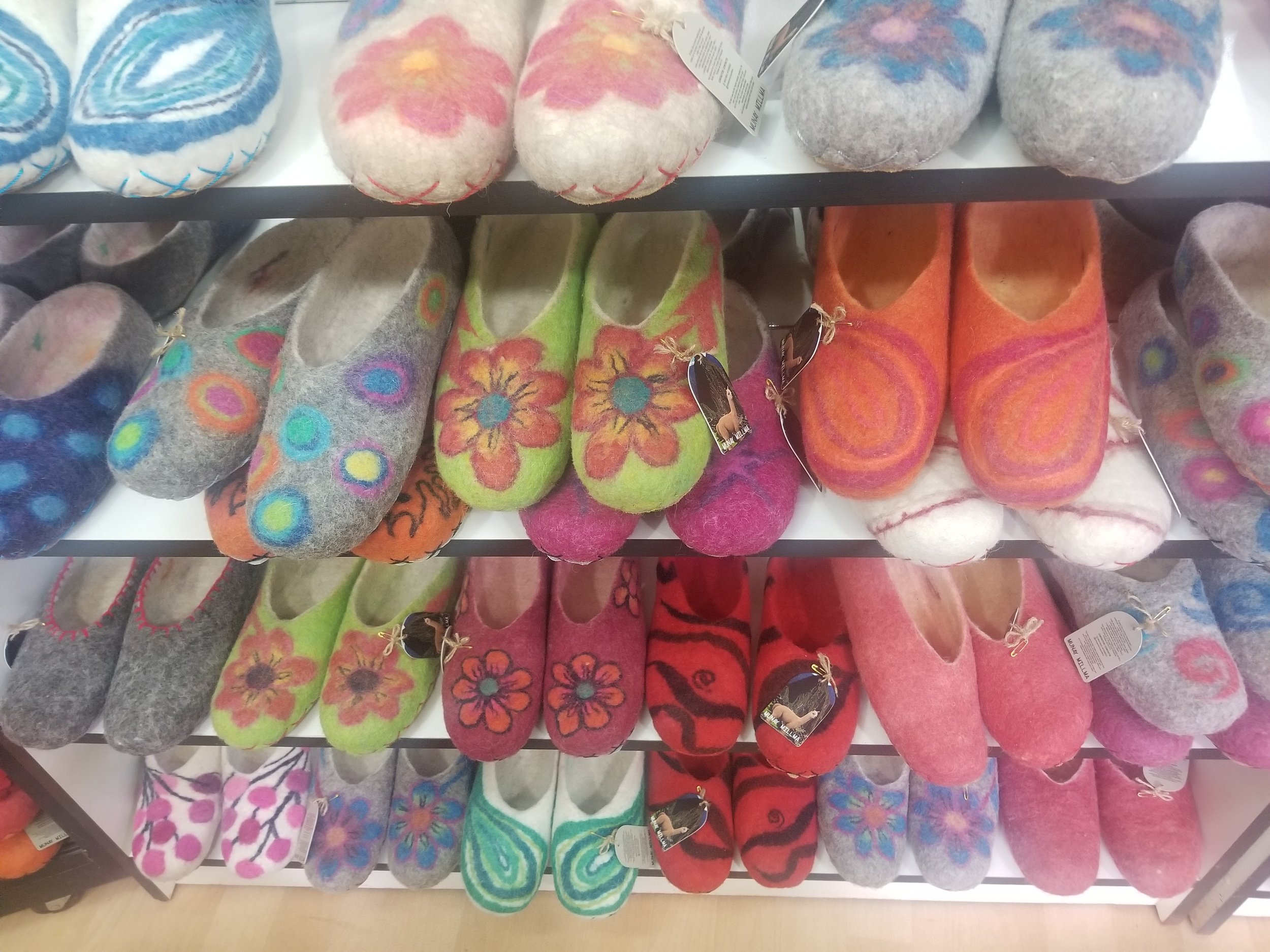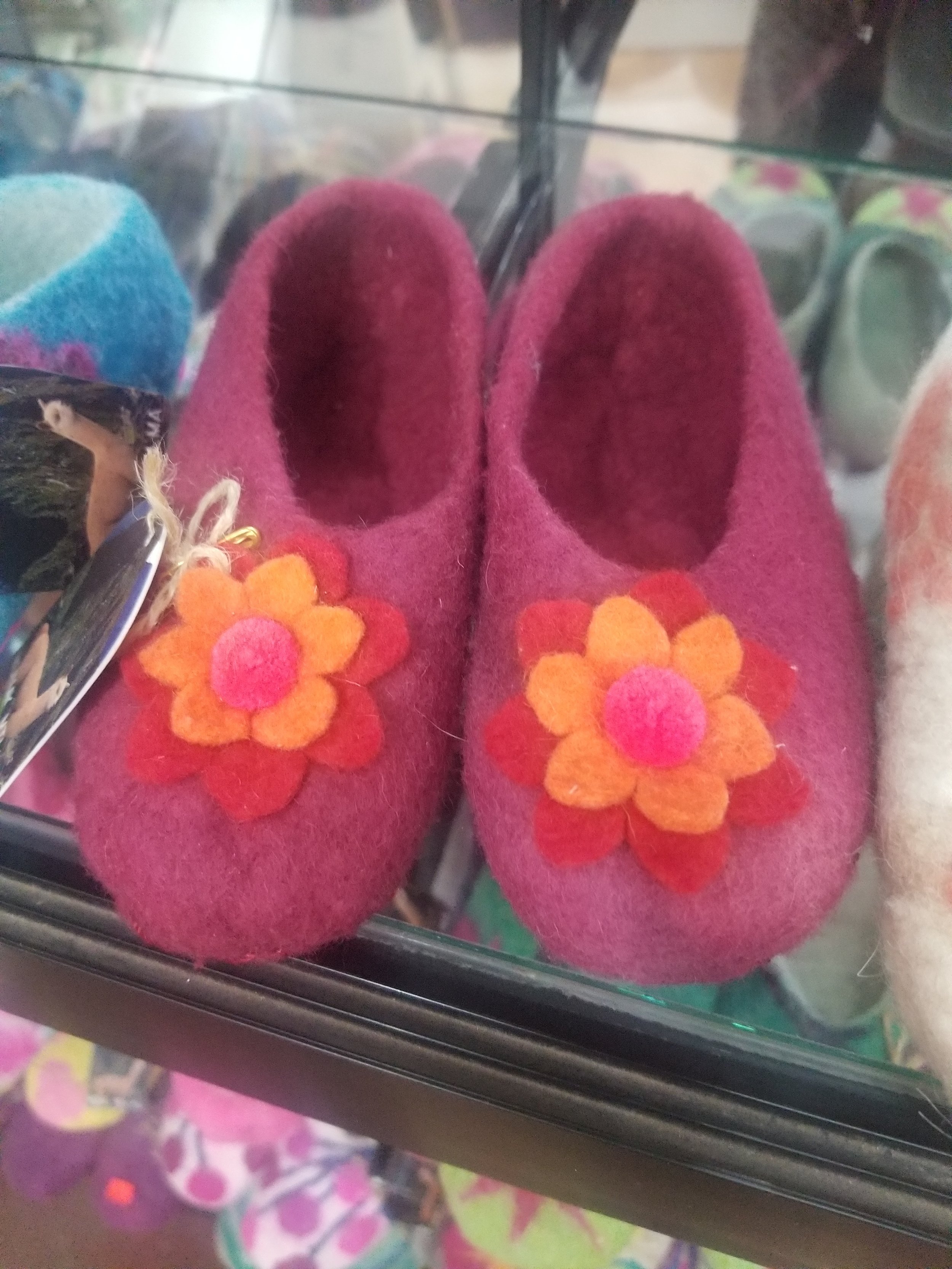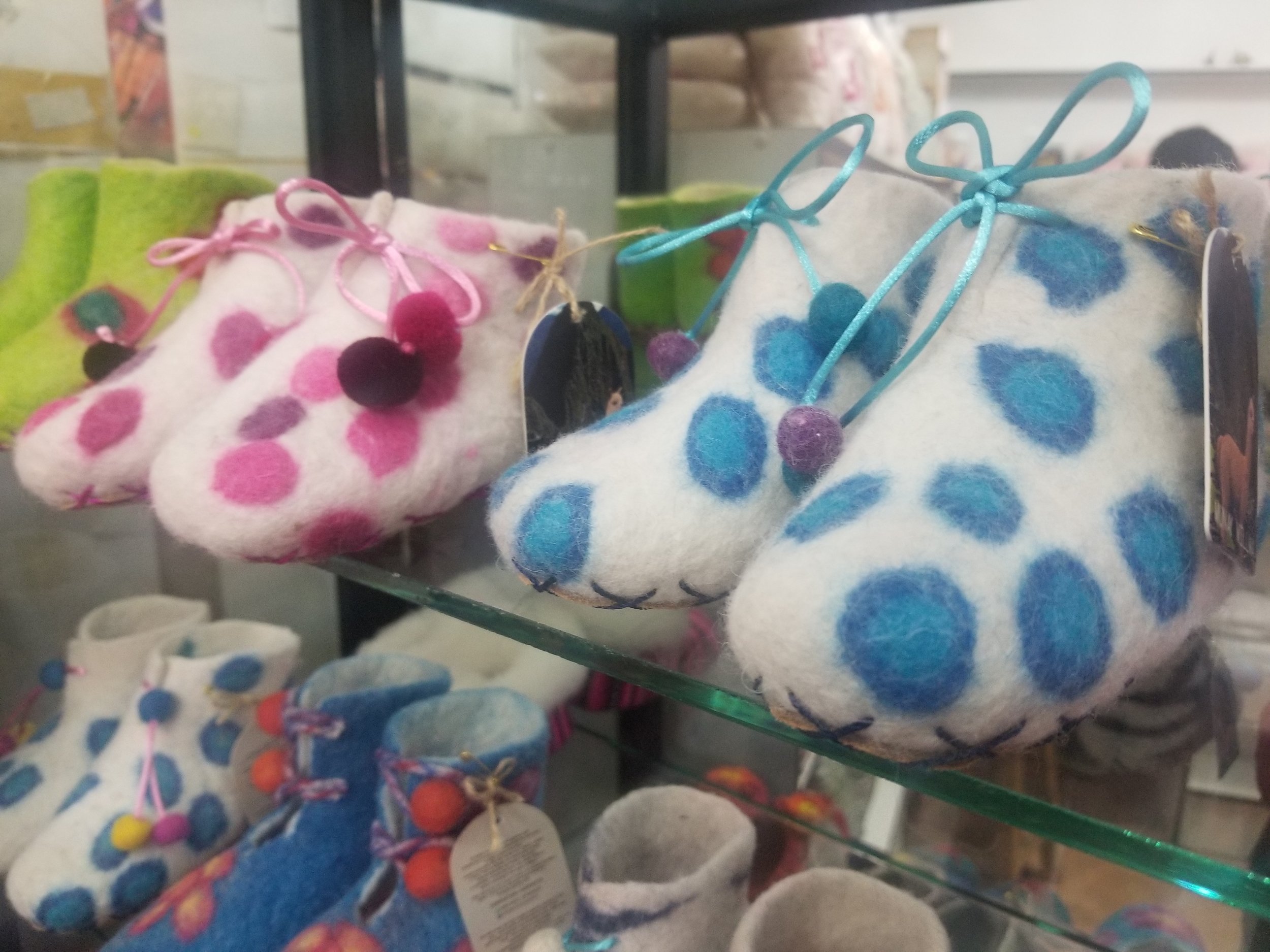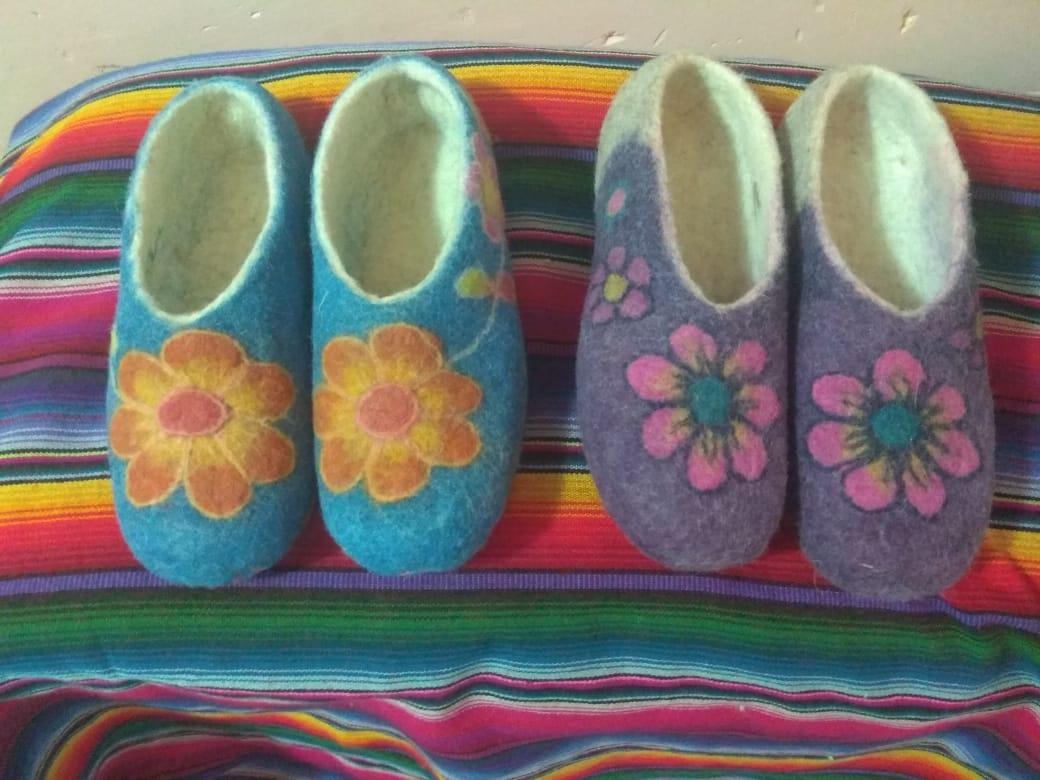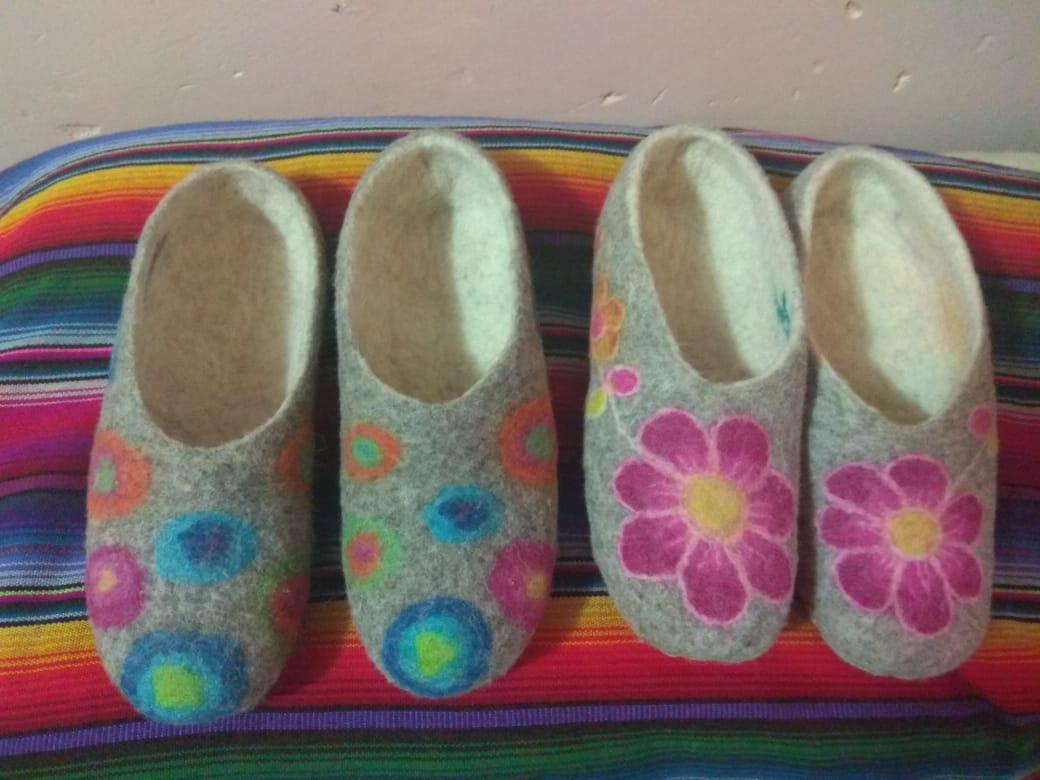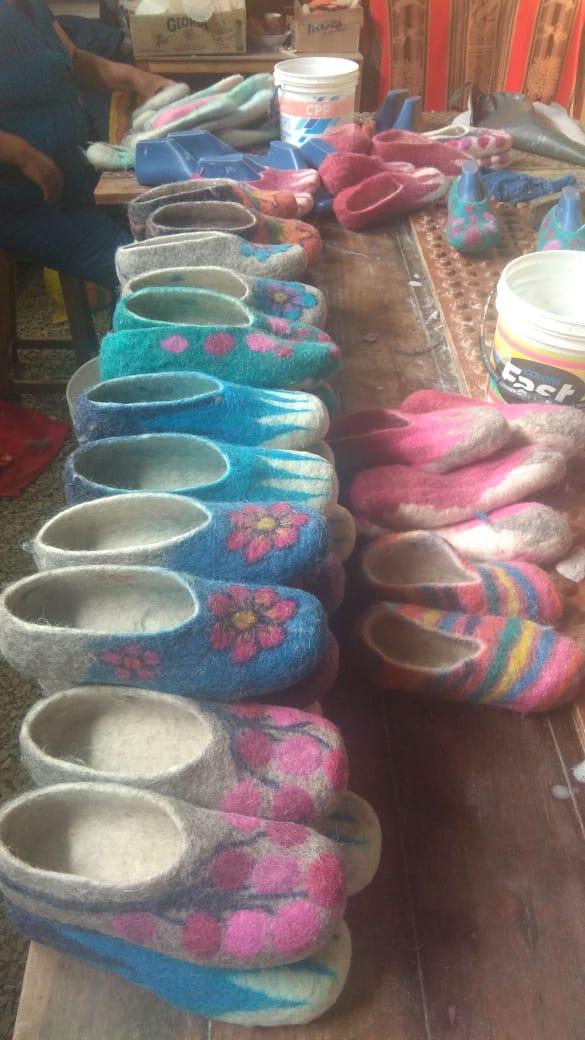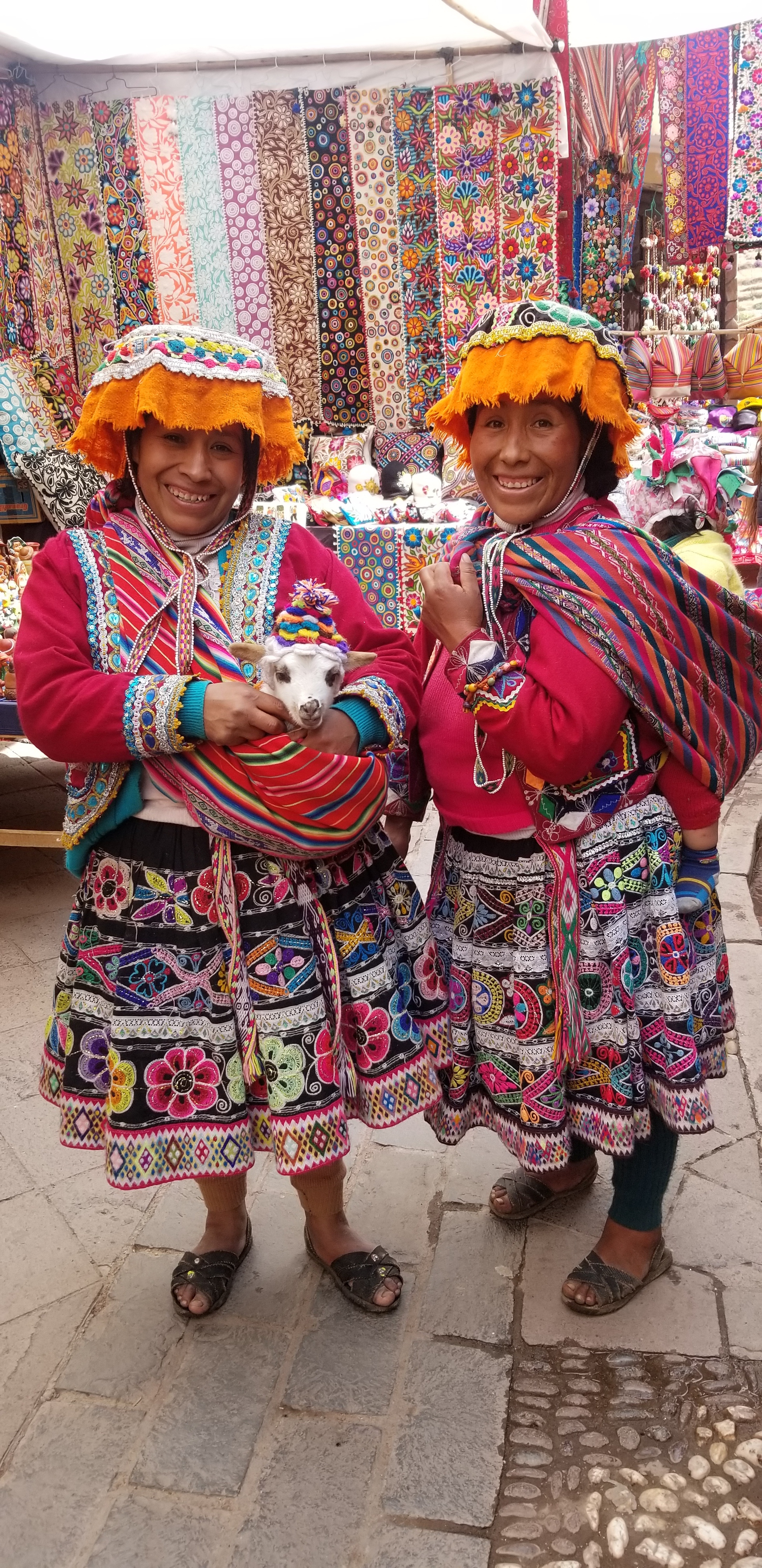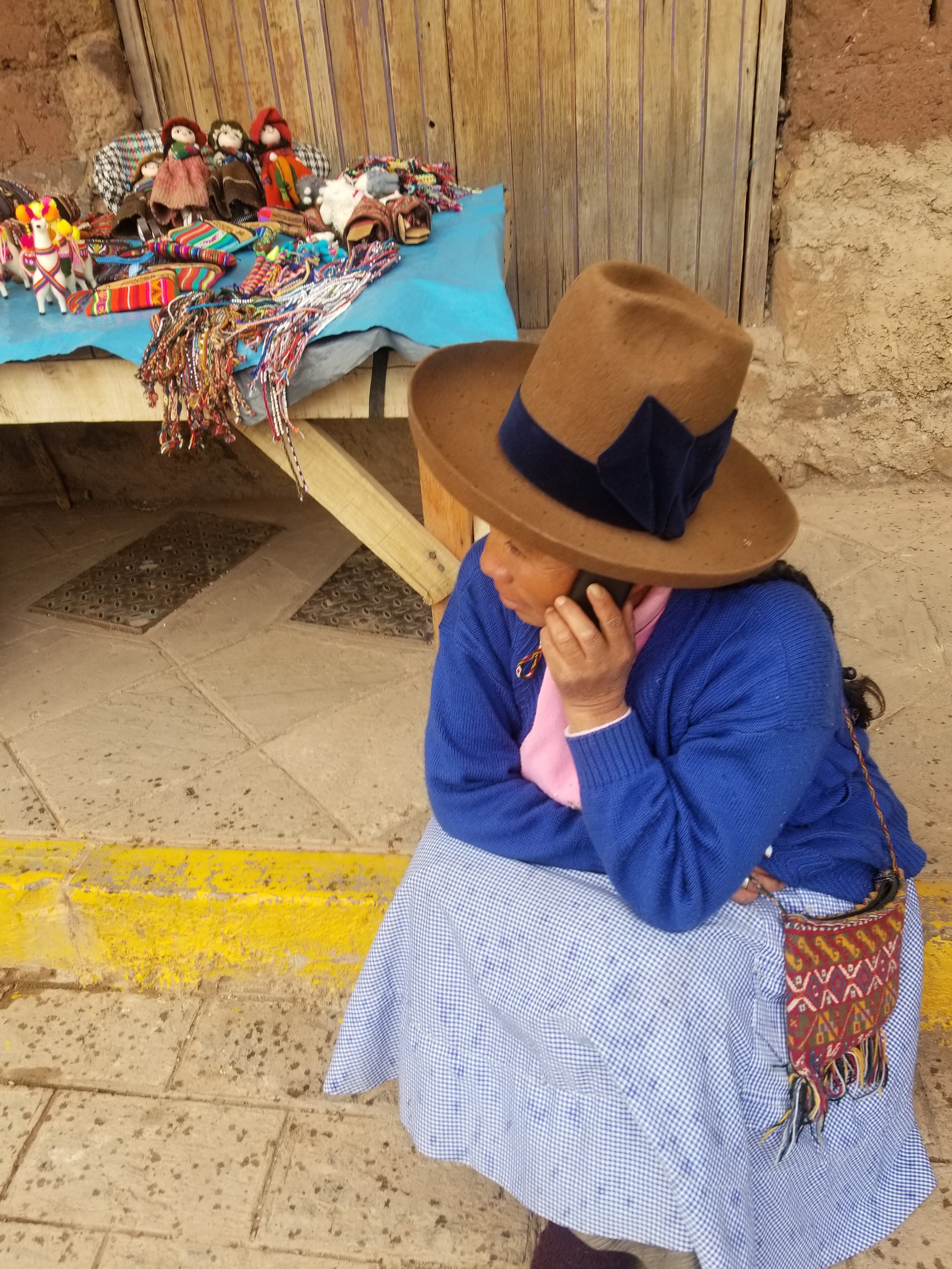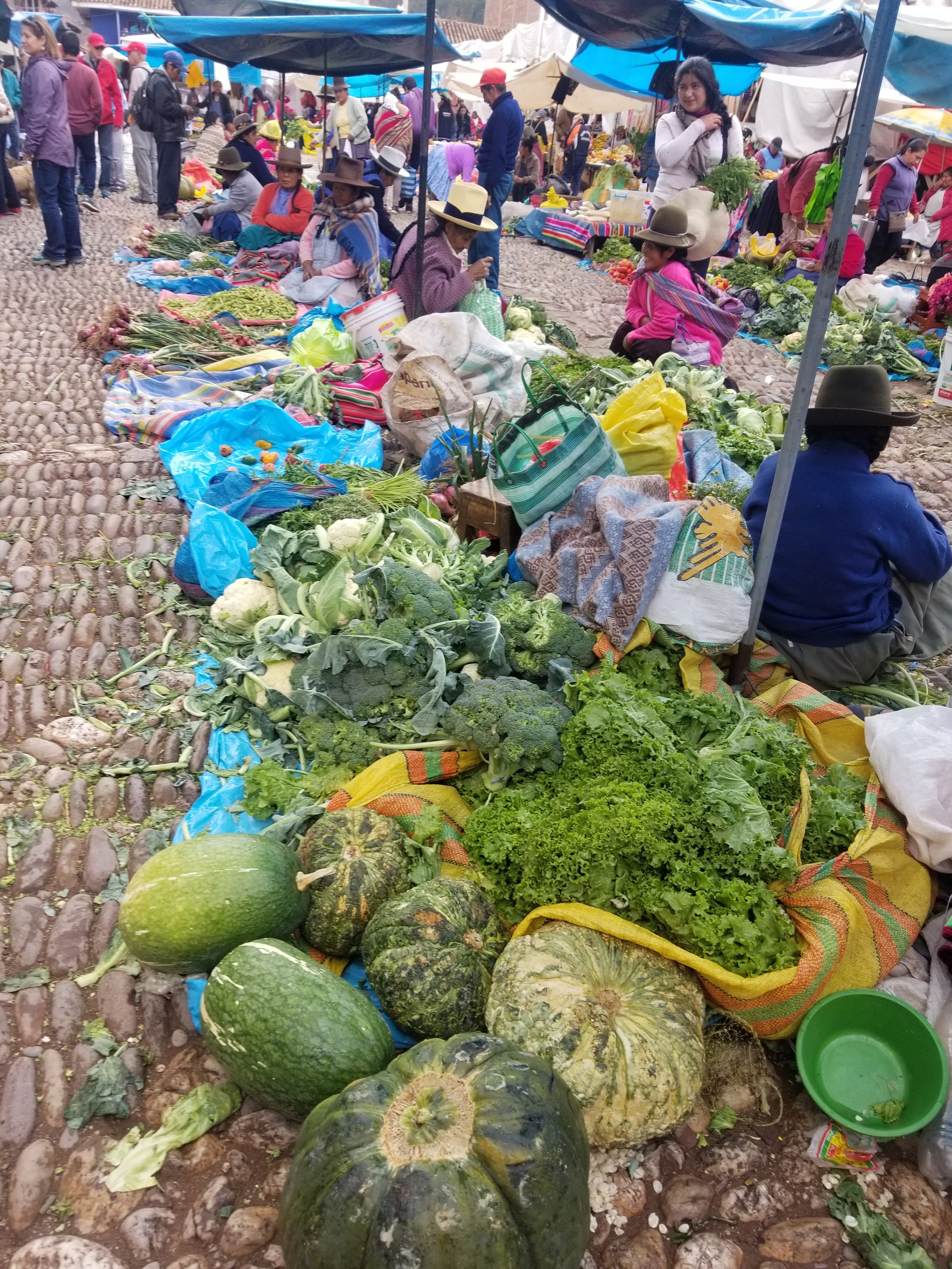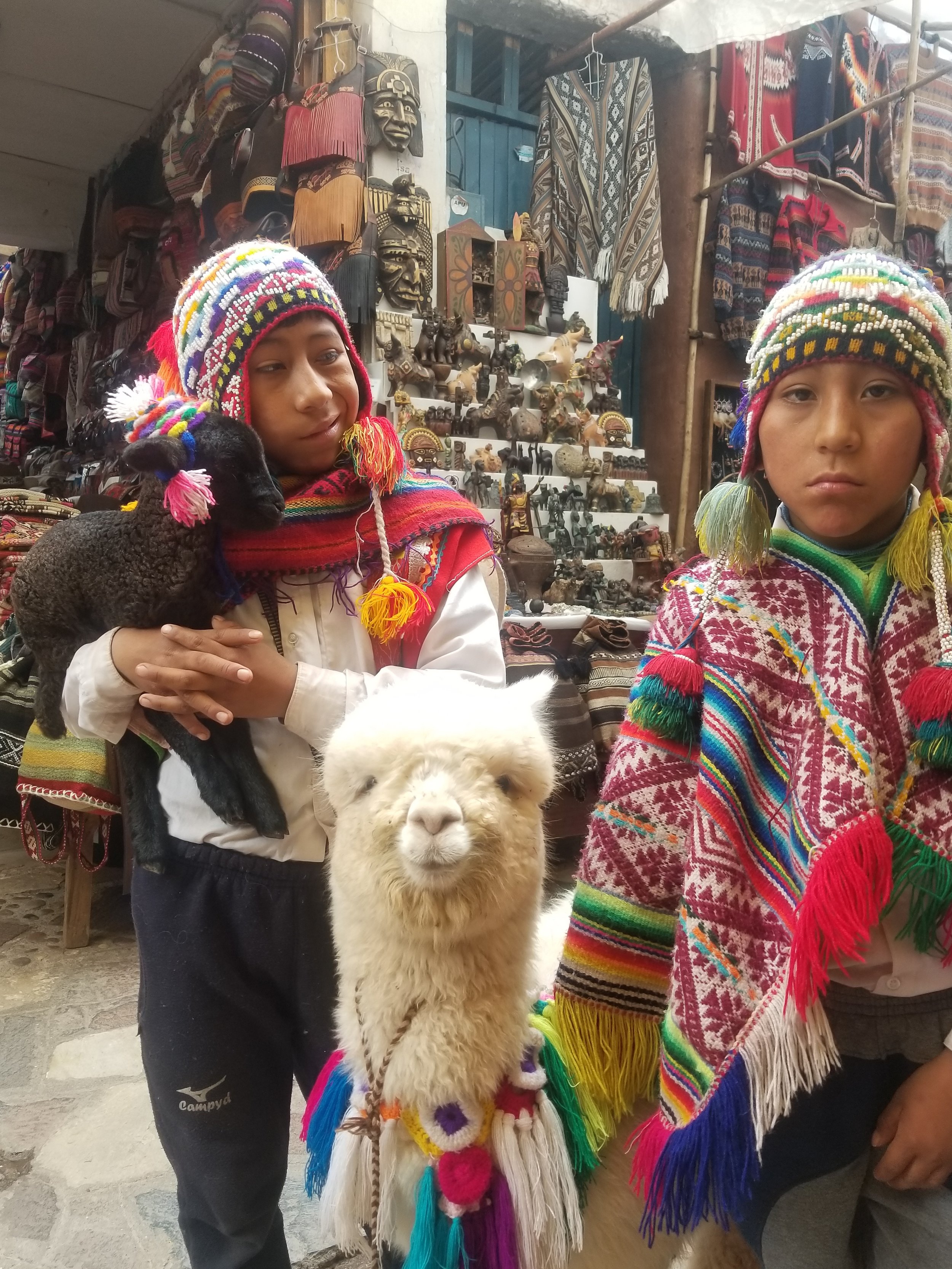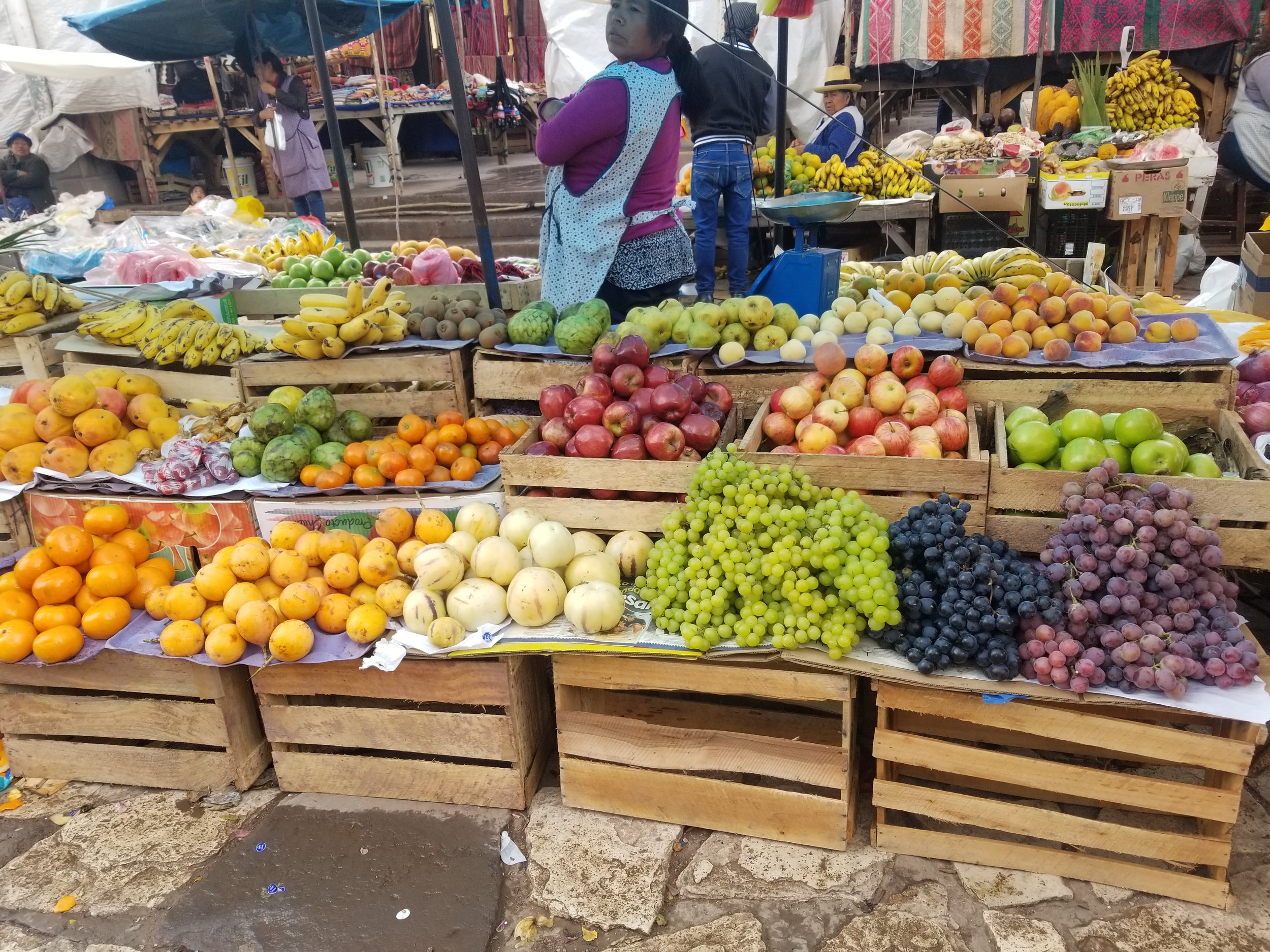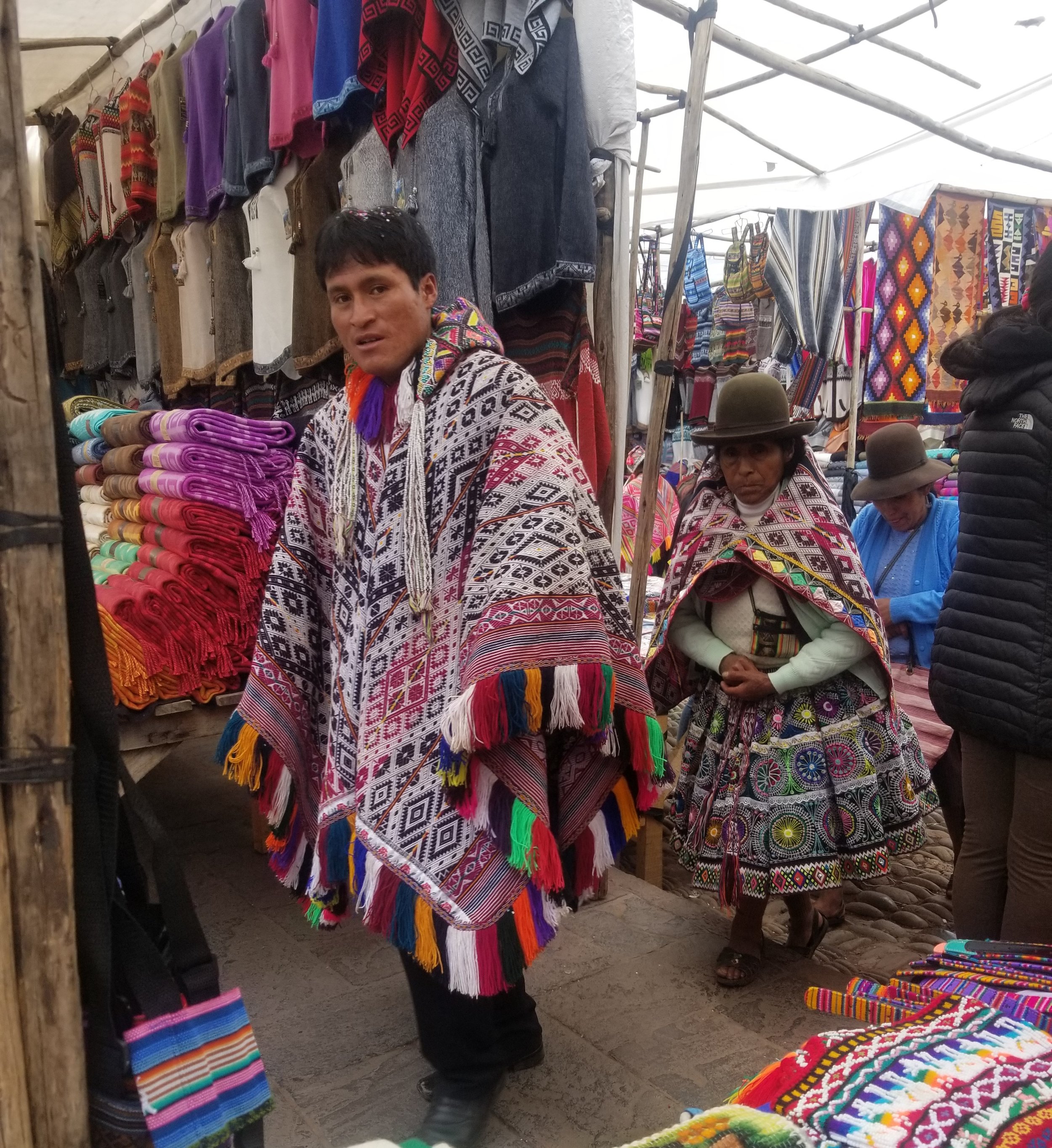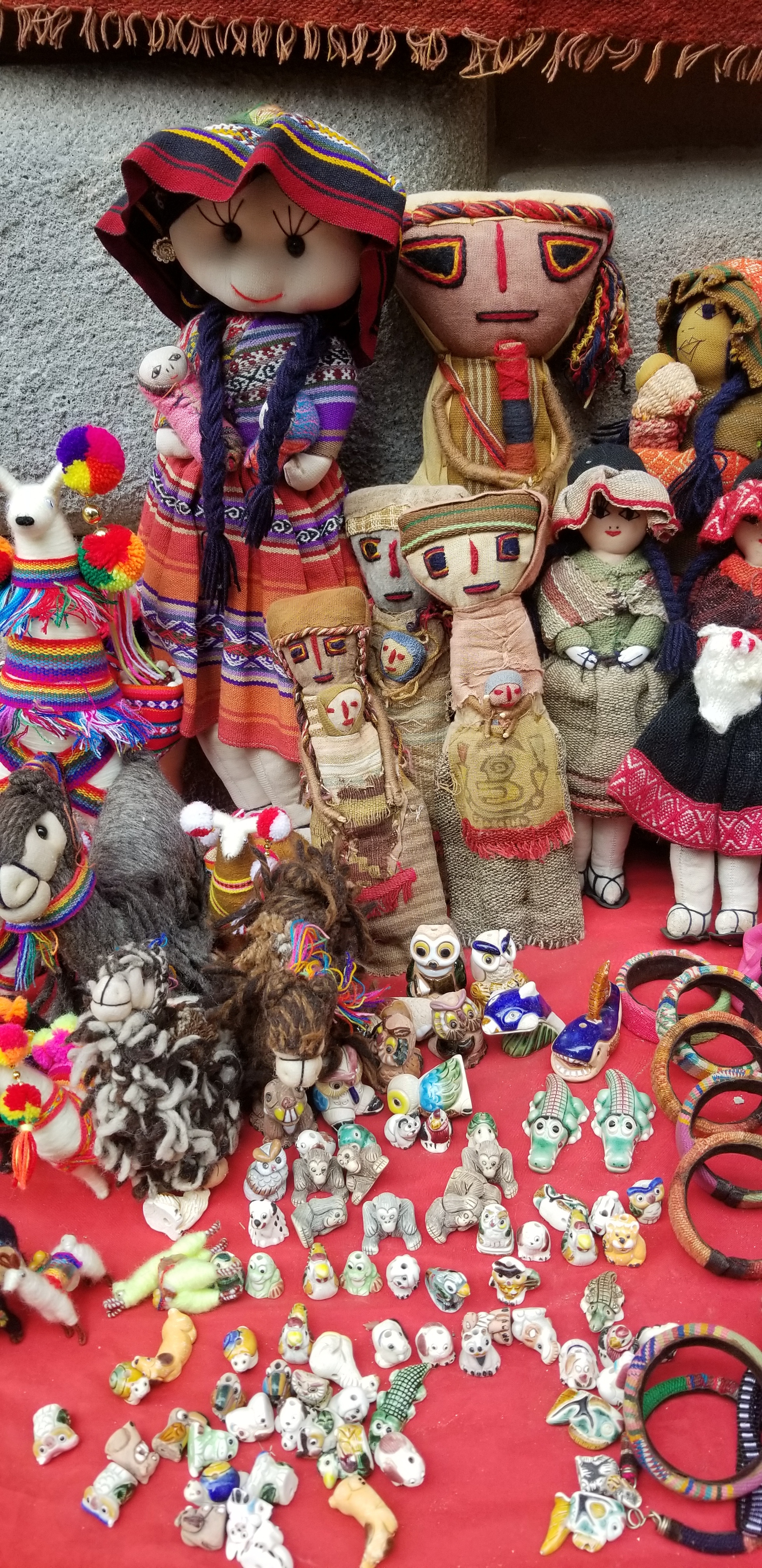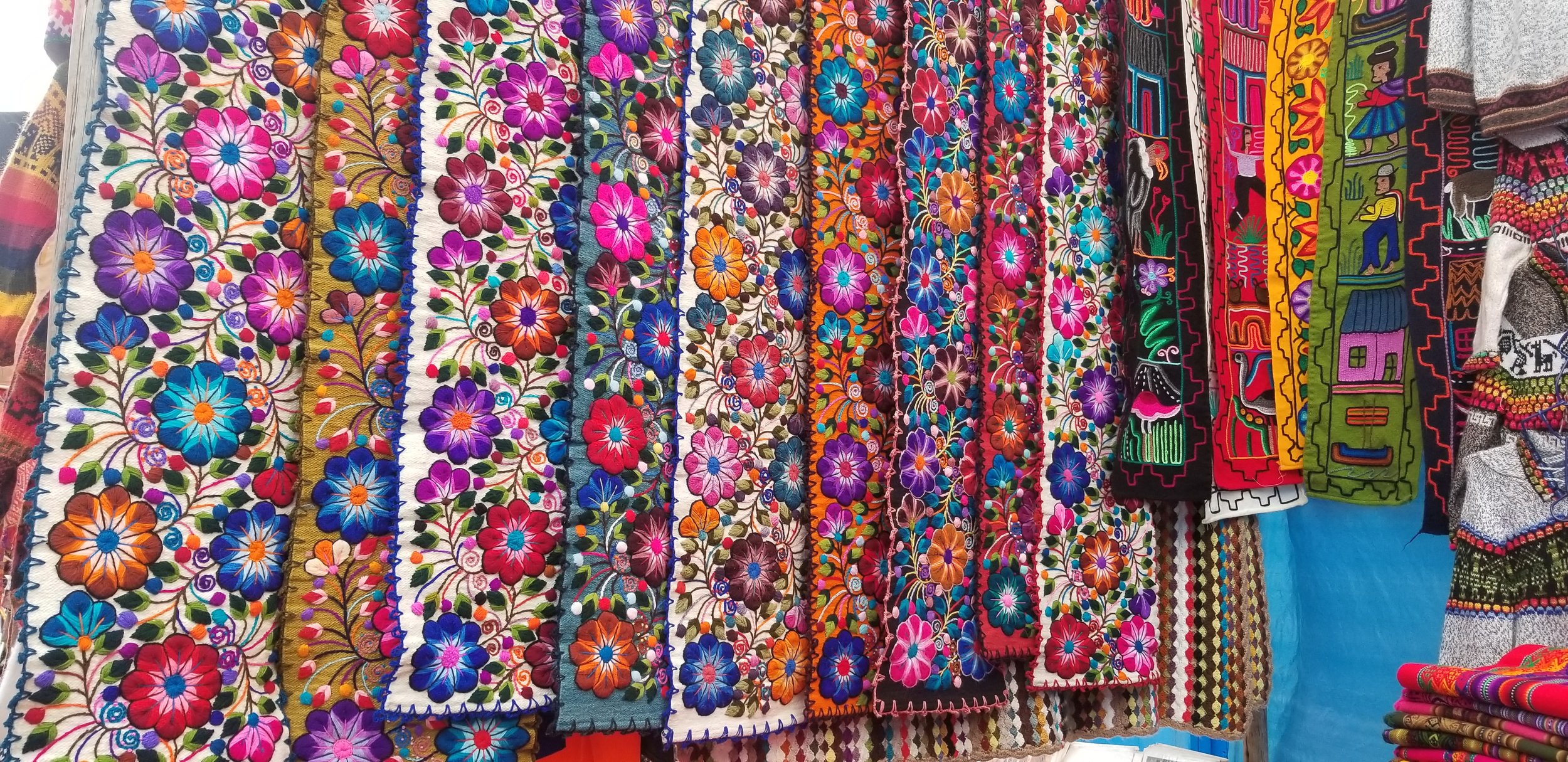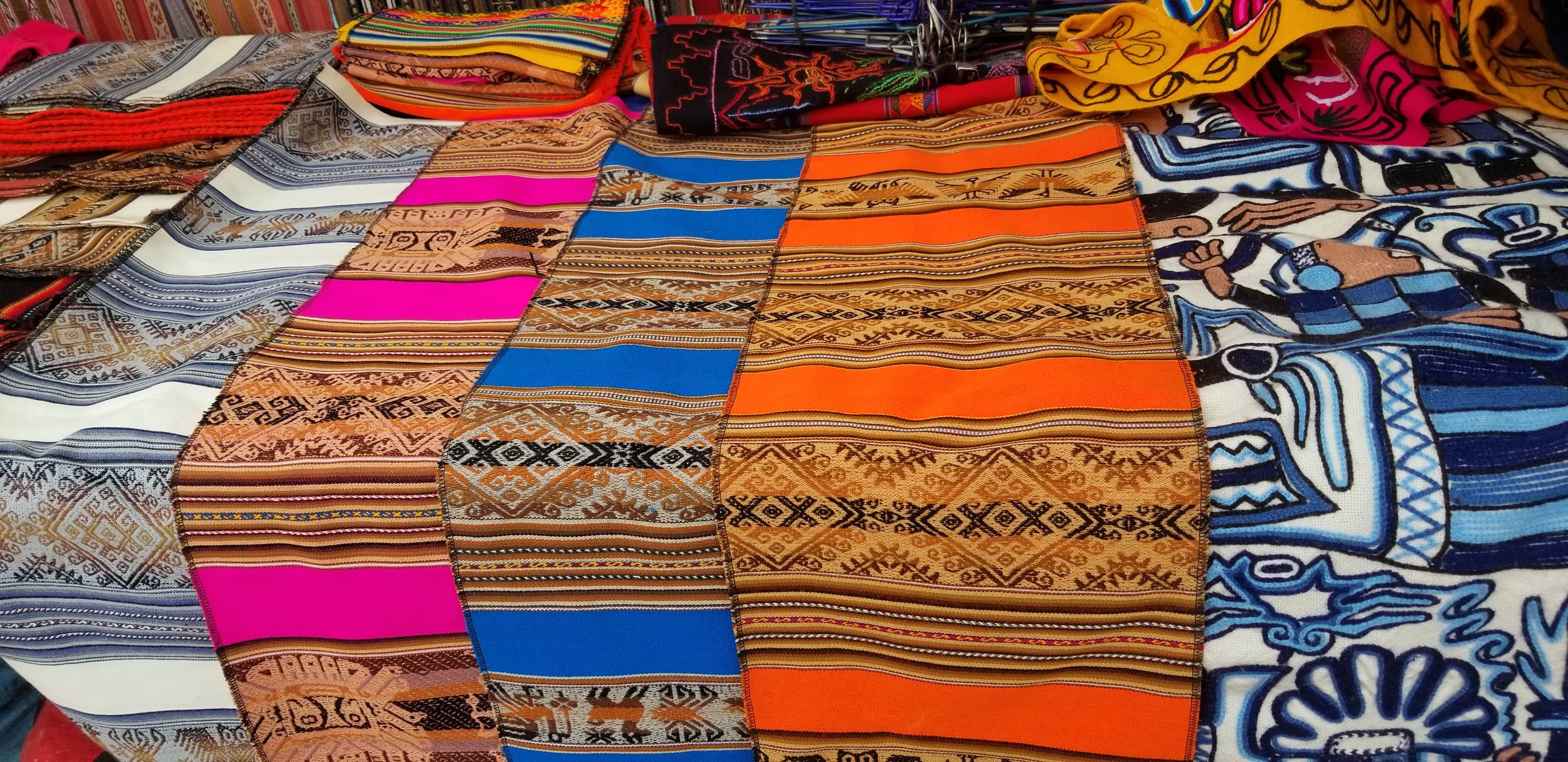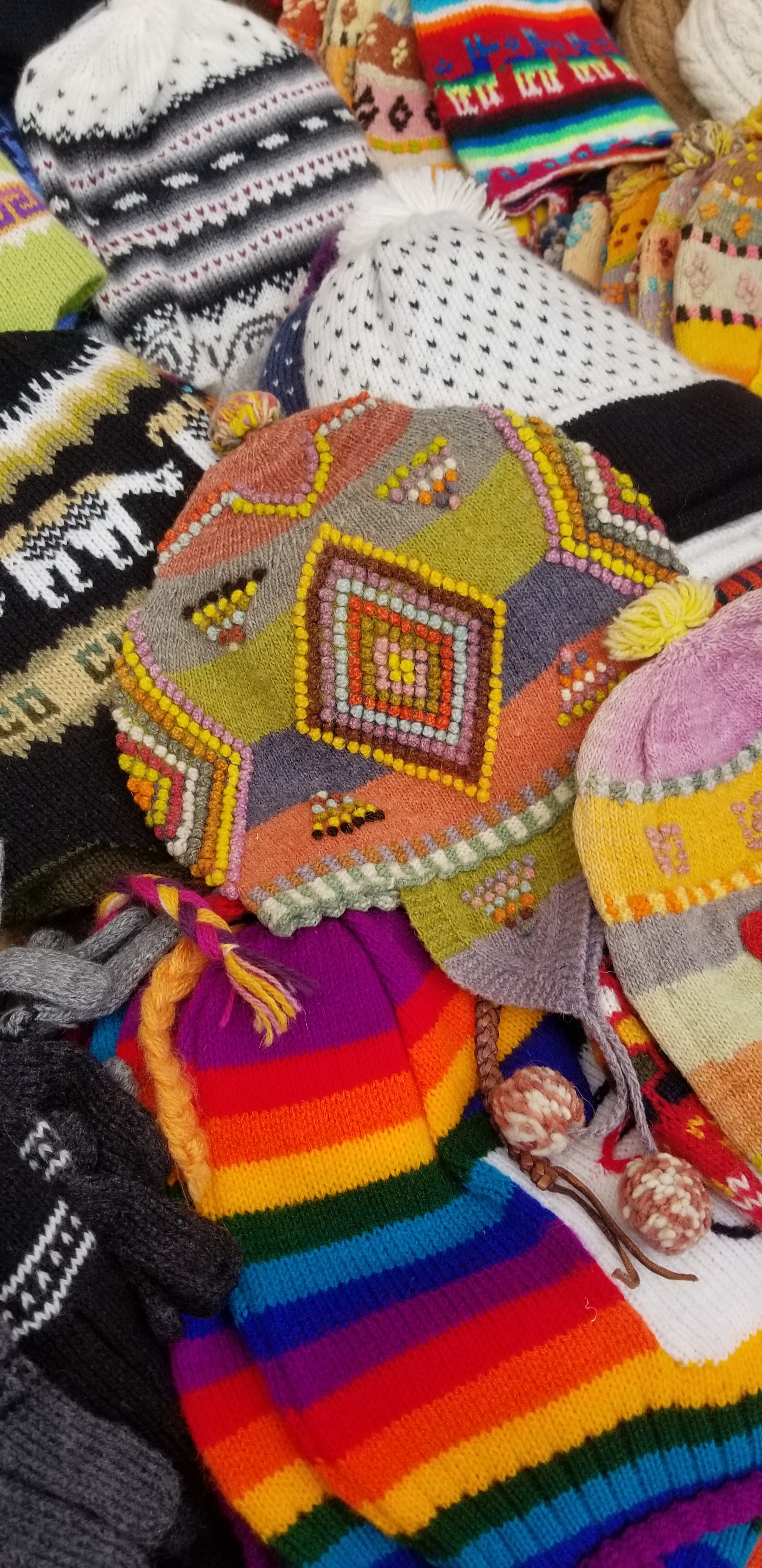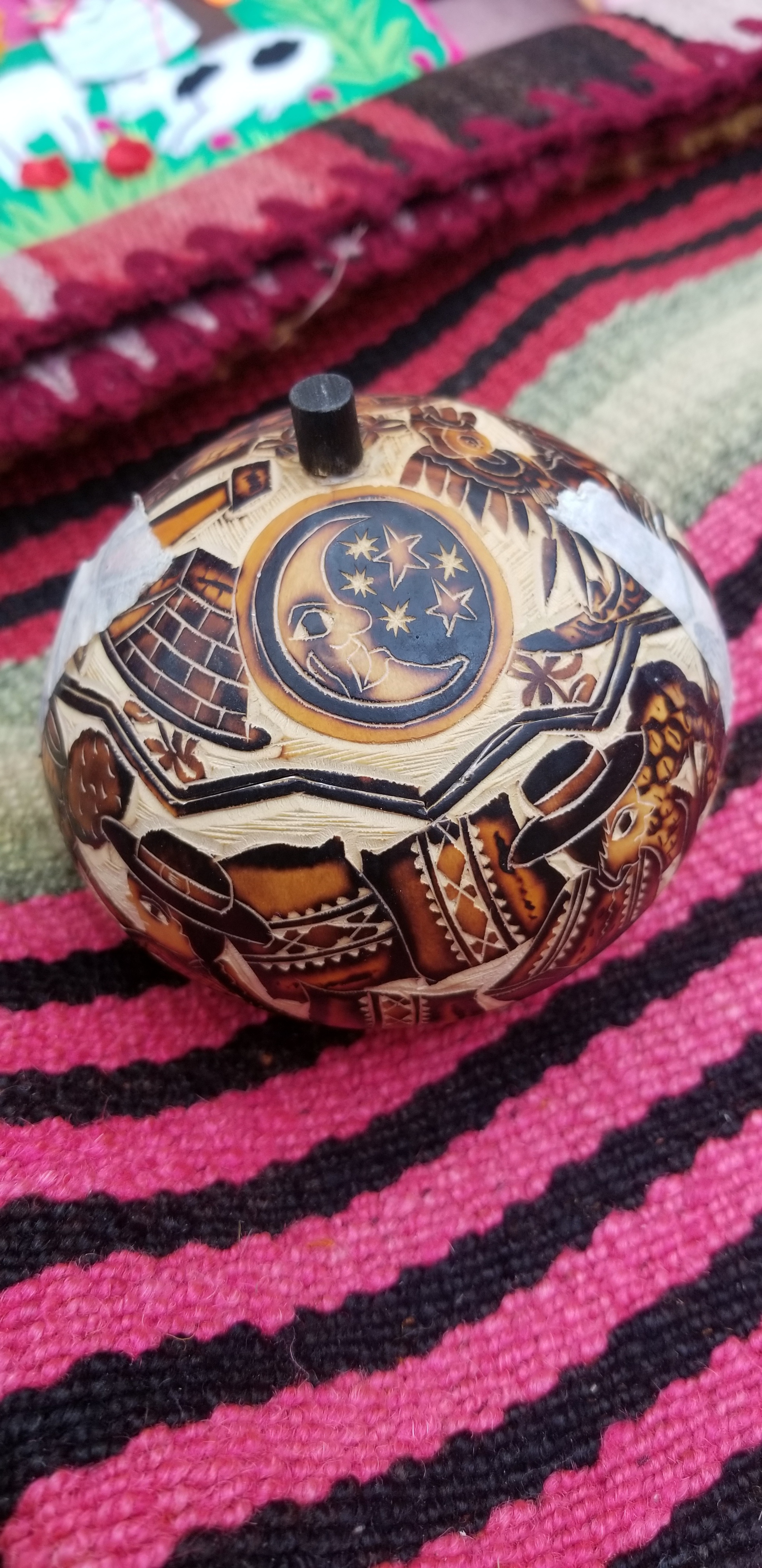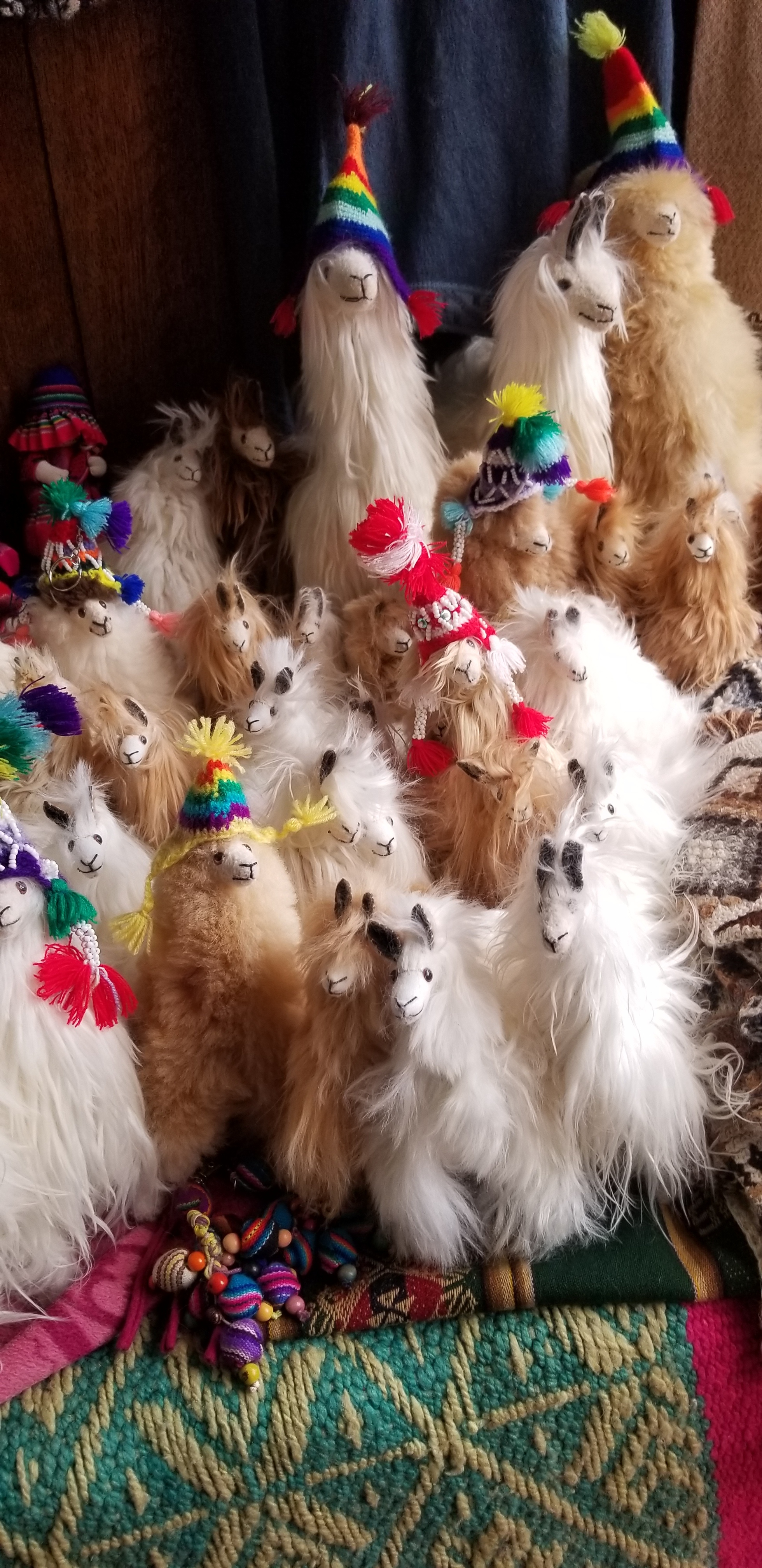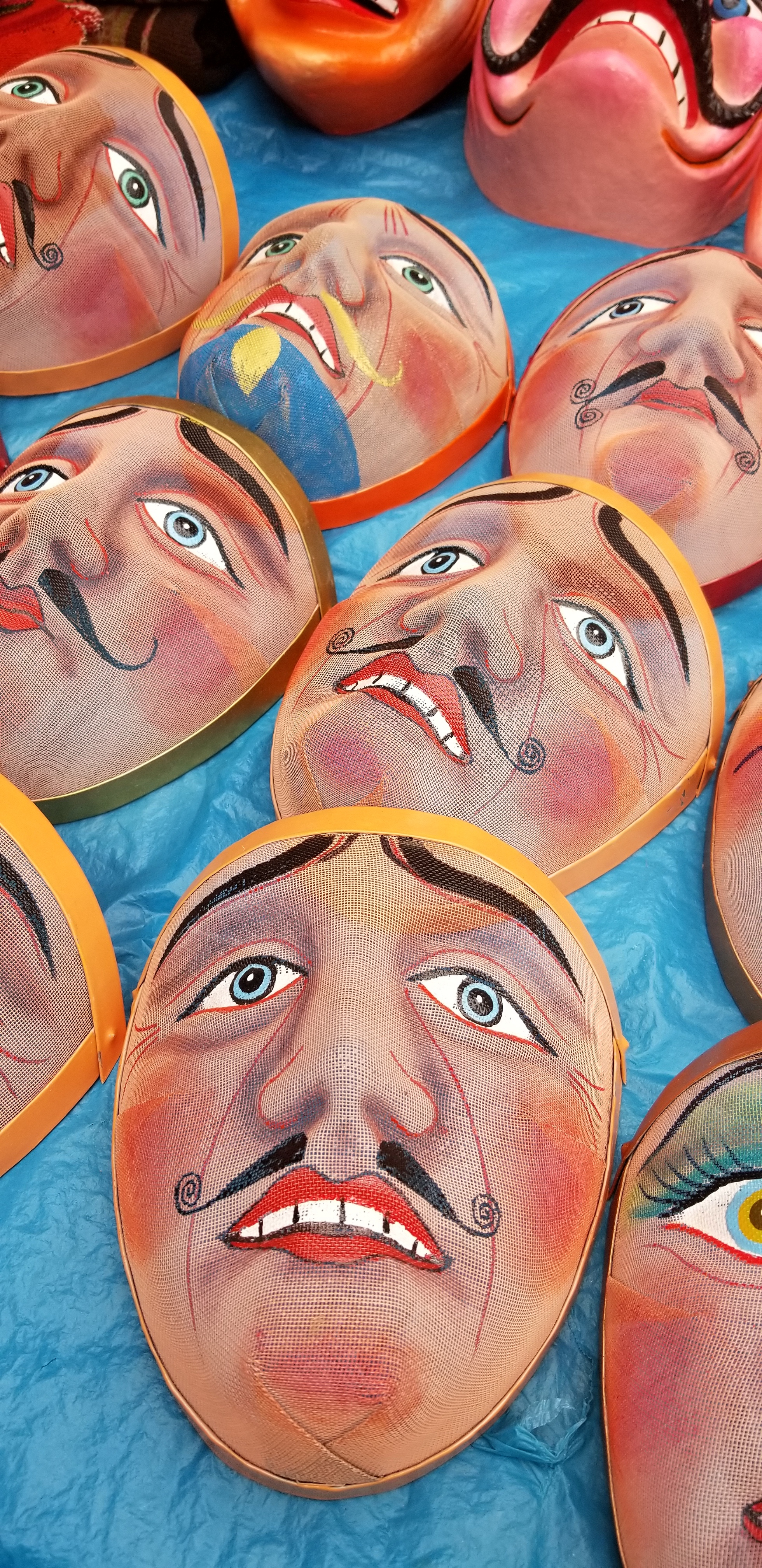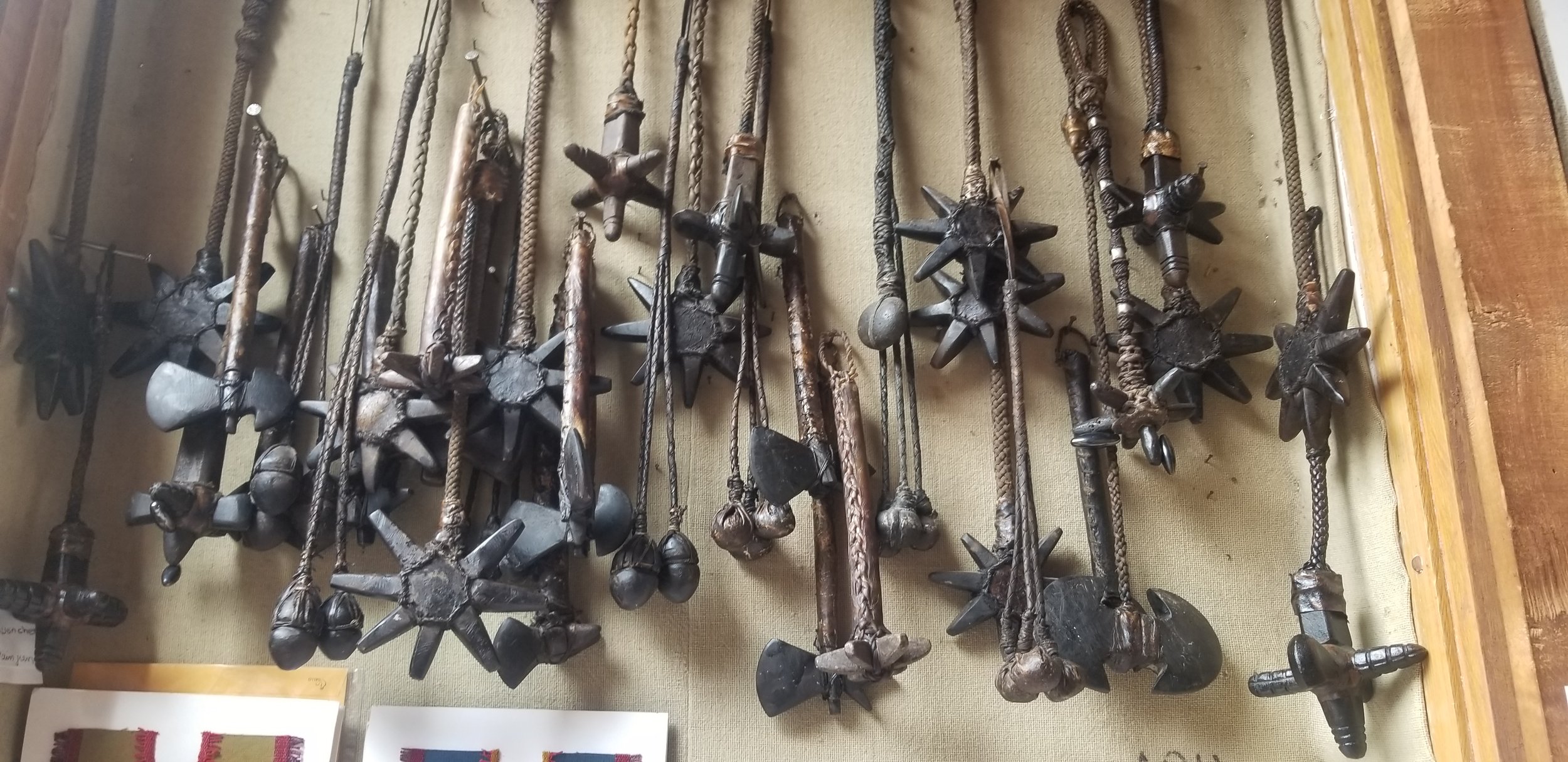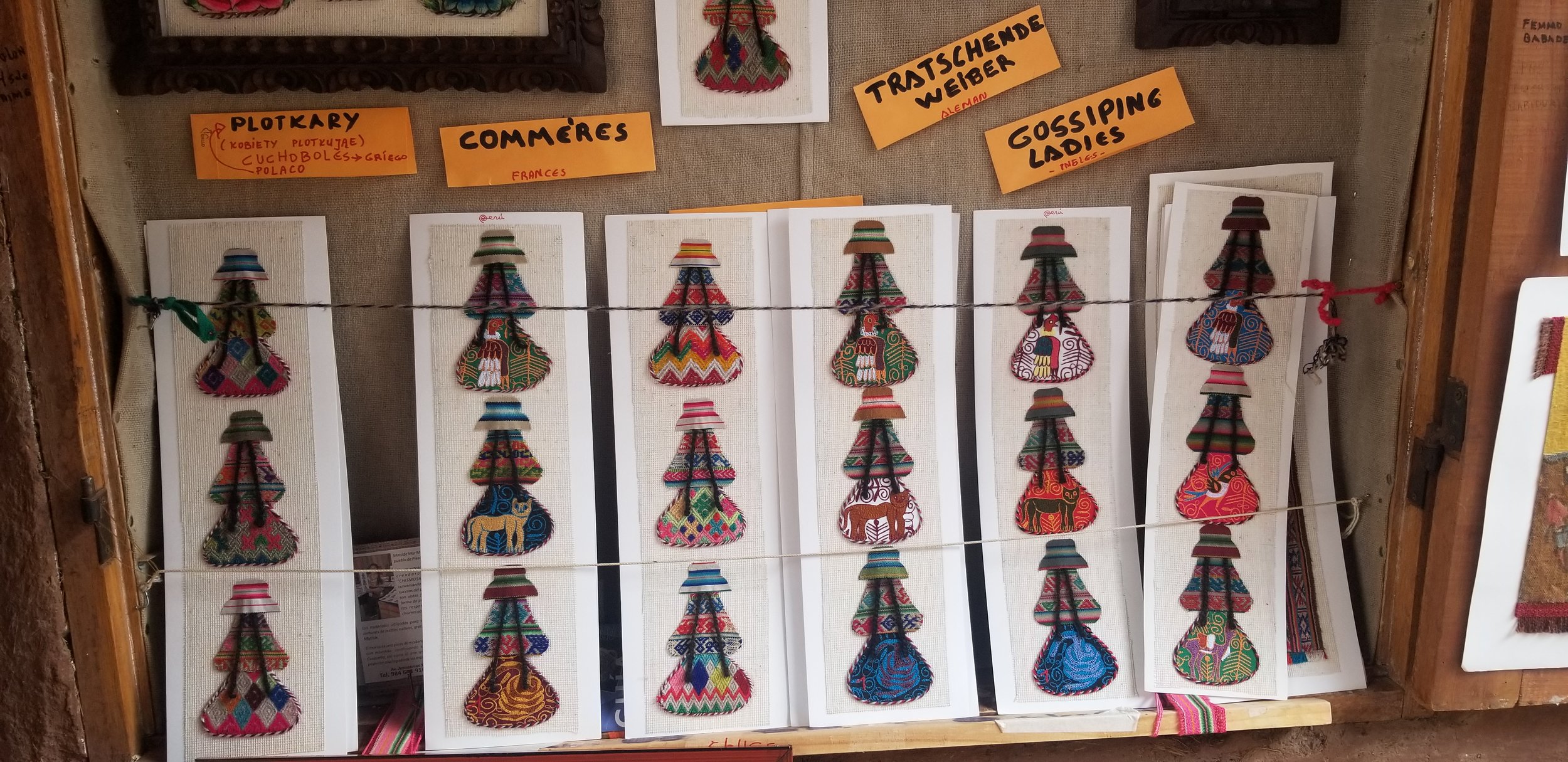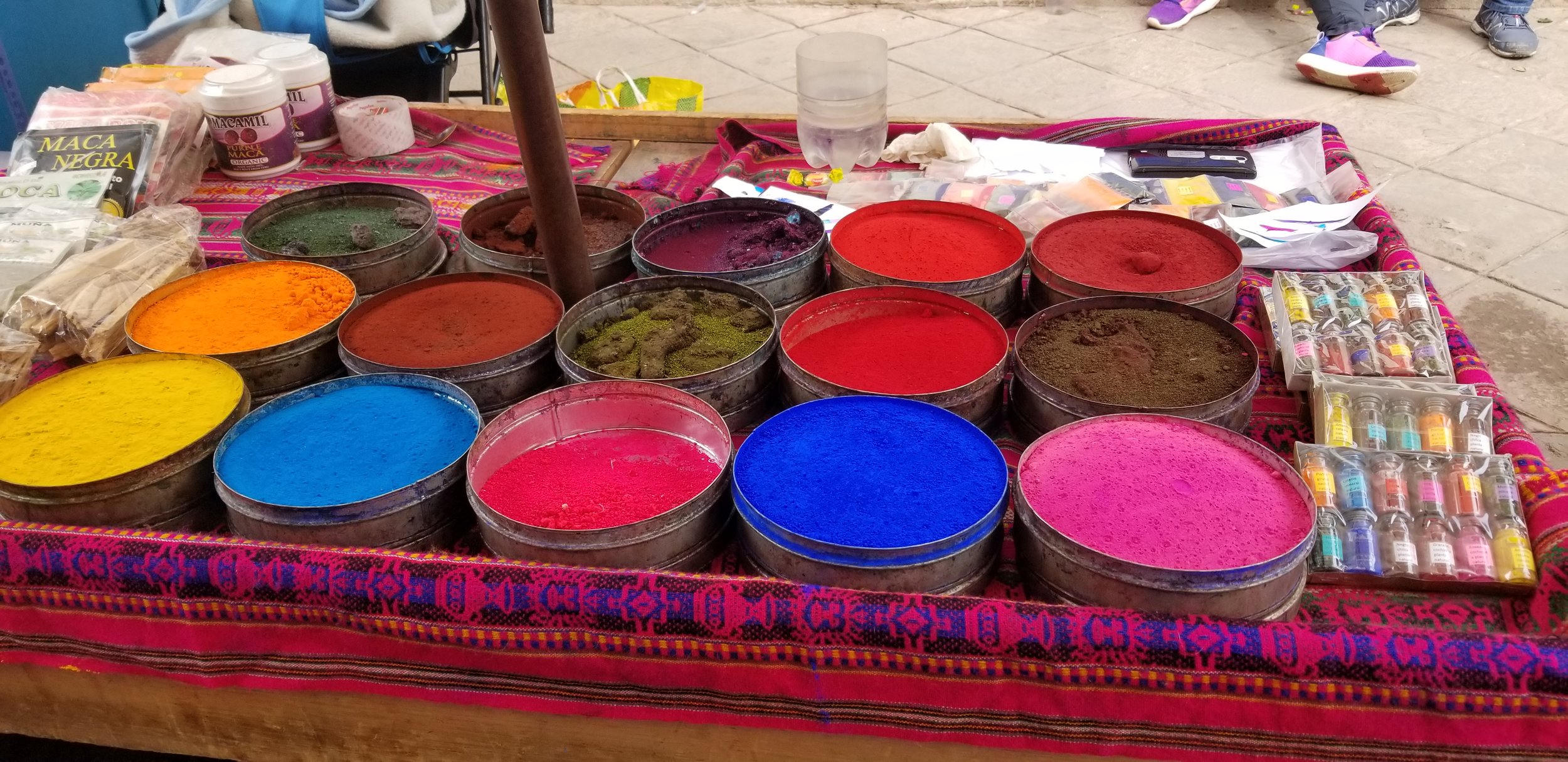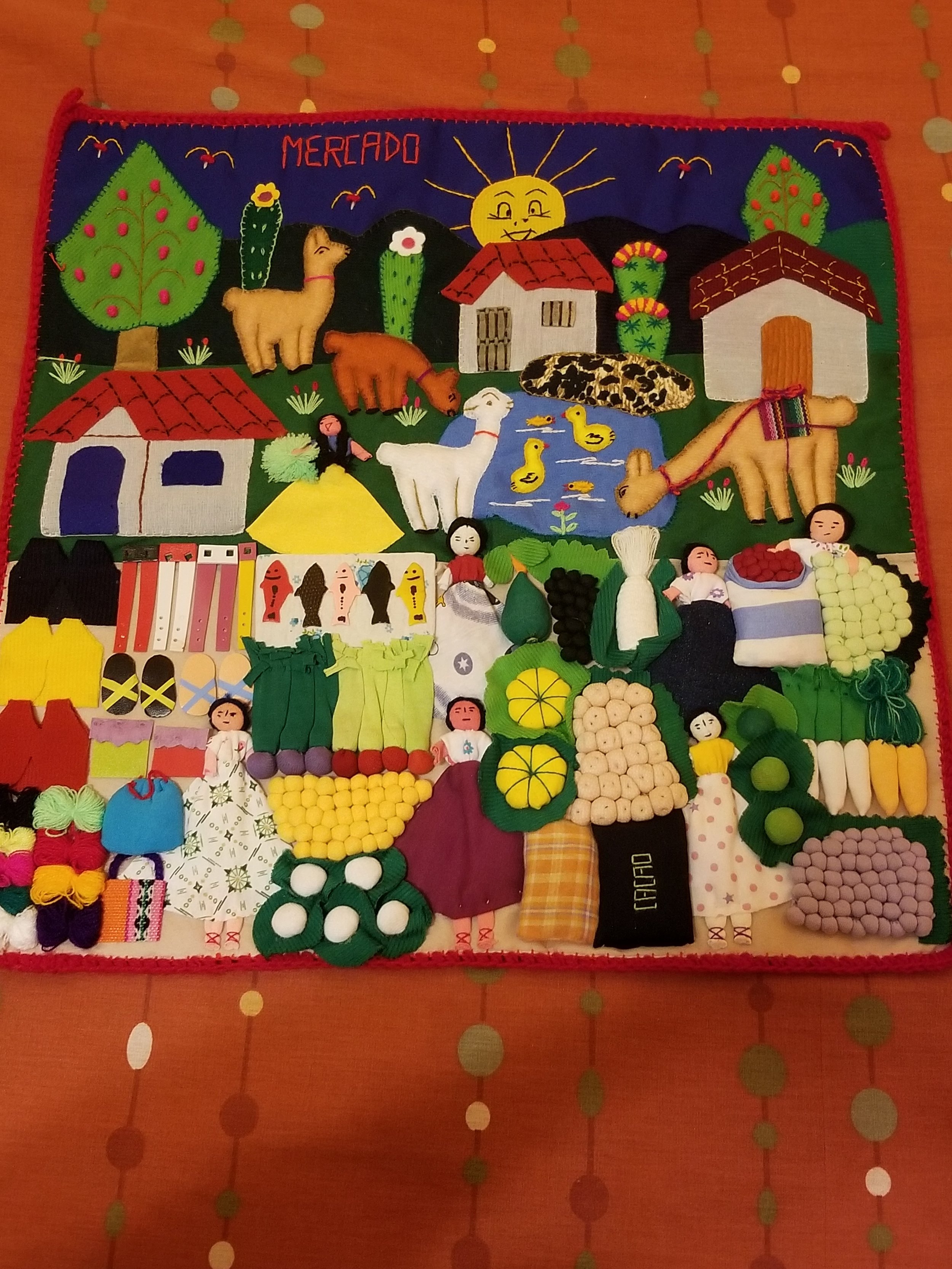I had been in Pisac for two days and felt like I’d seen it all. The market, the church, the ruins…what else was there? It’s a small village and you really can get to know the topography in a few days. But just like that, it changed. The village I met on Friday was completely transformed into a substantial marketplace on Sunday. There were shops where inconspicuous doors had been before. The open market expanded from 6 (ish) square blocks to 16+. There wasn’t enough time to see it all in one day. My plans to see Chinchero evaporated as I explored this new version of Pisac.
One little storefront I came across appeared to be a typical souvenir shop at first. From a casual glance outside Taller de Artesanias / Munay Millma appeared like many of the tourist shops - with some notable exceptions. In addition to the usual key chains, stuffed alapacas, and shot glasses there were flavored piscos, salts, honey, coffee, and chocolates. And then there were the slippers.
The slippers gave me pause. I love a good pair of wool slippers and these felted wool and alpaca slippers were like nothing I had seen in Pisac. They’re soft and pretty and they have leather bottoms and feel quite durable. So I stopped. And I stayed in that store for over an hour.
My Spanish is very, very poor on a good day and the shop owner’s English is non-existent so we spent a lot of time trying to communicate. But he was a good sport and we had fun talking about how the slippers are made, the therapeutic uses for salt, the differences in the piscos he carries, and a multitude of other sidebar conversations. He showed me a little of the technique they use in creating the slippers.
They breed their own sheep and alpaca and use the freshly shorn wool from the animals for their creations. They start by laying down the decorative pieces on their pattern and then essentially follow a typical felting process: they lay down hand-plucked pieces of fiber onto each layer, with each level crossing over the last. Then they add soapy water to soak the layers. This is done over and over again. After they have the right thickness they knead the piece and roll it to squeeze the soap out. Then an incision is made into the middle of one side and the pattern is pulled out. Then the slipper is molded around a foot form.
After that initial shaping is done they remove the foot form and continue to knead and roll the slippers again and again. They intermittently insert the foot form to keep the shape of the slipper as they continue to expel the soapy water. Once that is completed they let the slipper air dry and then hand-stitch leather soles onto the bottoms.
Believe me when I tell you I’m over-simplifying the process. It takes hours to make a pair of slippers and at times the repetition seems tedious to me. But you can’t argue with the results.
The have cute baby booties, designs for women and men, and they even have handbags. The varieties are only limited by the artist’s imagination. They are also starting to do some Ugg-like boots with manufactured soles now.
I brought back a few pairs that will be at the showcase. In the meantime, here are more photos for you to enjoy.

